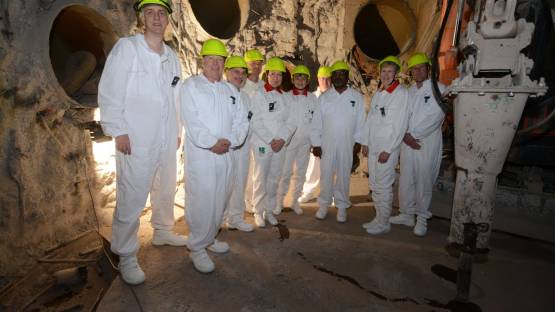 An International Atomic Energy Agency (IAEA) Integrated Review Service for Radioactive Waste & Spent Fuel Management, Decommissioning & Remediation (Artemis) team has completed a review in Slovakia. The mission concluded that Slovakia is committed to the safe and effective management of radioactive waste and used fuel. It also commended Slovakia for its decommissioning activities while noting opportunities to enhance preparations for geological disposal.
An International Atomic Energy Agency (IAEA) Integrated Review Service for Radioactive Waste & Spent Fuel Management, Decommissioning & Remediation (Artemis) team has completed a review in Slovakia. The mission concluded that Slovakia is committed to the safe and effective management of radioactive waste and used fuel. It also commended Slovakia for its decommissioning activities while noting opportunities to enhance preparations for geological disposal.
The 10-day mission was carried out at the request of the government and was hosted by the Slovak National Nuclear Fund. The team comprised six experts from Germany, Lithuania, South Africa, Sweden, Switzerland and the UK, as well as two IAEA staff members and a European Union (EU) observer. Discussions were held with the government, the regulatory bodies, the NPP operator, the Slovak Nuclear & Decommissioning Company (JAVYS) and the National Nuclear Fund. The mission also aimed to support Slovakia in meeting EU obligations that require an independent review of national programmes for managing radioactive waste and used fuel. The Artemis team took into account the findings from a September 2022 Integrated Regulatory Review Service (IRRS) mission, which assessed the regulatory framework.
Slovakia’s radioactive waste and used fuel originate primarily from four pressurised water reactors at the Mochovce and Jaslovské Bohunice NPPs. The use of radiation sources in agriculture, industry, medicine and research applications generates limited quantities of radioactive waste.
JAVYS is responsible for radioactive waste and used fuel management. Used fuel is stored for a few years in reactor pools at the NPP sites before being transported to an interim storage facility in Bohunice. Slovakia also manages used fuel from the past operation of three power reactors as well as radwaste from current decommissioning activities at the Bohunice site. Very-low-level radioactive waste and low-level radioactive waste are being disposed of at a near-surface disposal facility (national radioactive waste repository) at Mochovce. Slovakia plans to develop a geological disposal facility for used fuel and radioactive waste not suitable for near-surface disposal.
In their report, the team highlighted progress in decommissioning the V1 Bohunice NPP, scheduled for completion by 2027. The application of an immediate dismantling strategy combined with the treatment of all materials arising from the decommissioning waste was considered outstanding. The team commended Slovakia on the work to ensure that radioactive wastes are managed in a timely manner and on significant efforts to minimise waste volumes through effective segregation and conditioning.
The team made recommendations for further safety improvements and responsible management. These included that:
- The government should decide on undertaking further work on geological disposal.
- The government should proactively involve interested parties, including the public, in selecting the location for the geological disposal facility.
- The National Nuclear Fund should establish procedures for the timely and regular updating of the national programme for radioactive waste and used fuel management.
“Slovakia has established a good basis for the safe and responsible management of radioactive waste and spent fuel as well as for decommissioning,” said Artemis team leader Thiagan Pather from the National Nuclear Regulator in South Africa. The final mission report will be provided to the government in two months.
Image: The IAEA Artemis team on their recent mission in Slovakia (courtesy of IAEA)






